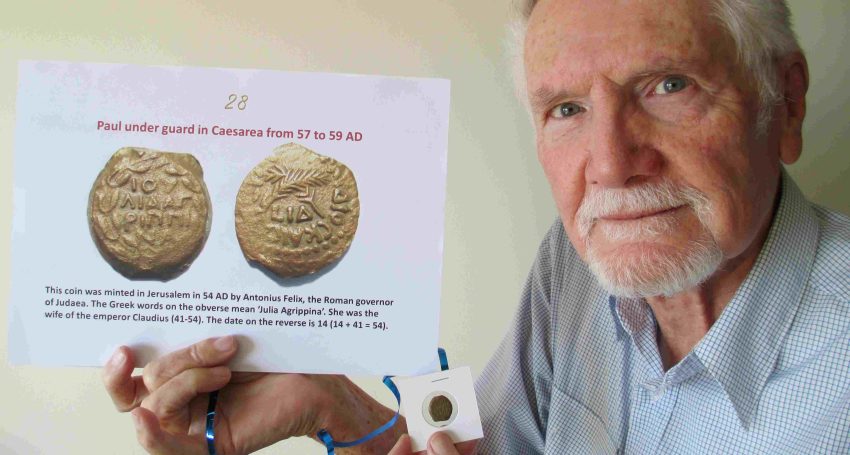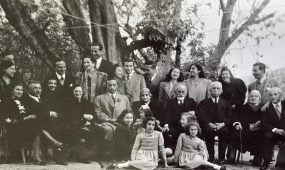St Paul’s coins
People & History
“The coins give us a tangible connection to the man who wrote most of the letters in the New Testament and who was Luke’s hero in Acts. As well as providing a tangible link, the coins have much to tell us about the environment in which Paul did his seminal work,” says Dr Peter Lewis from The Parish of Gold Coast North

I worship at St James’ Church in The Parish of Gold Coast North and for many years my hobby has been studying ancient coins relating to Christianity’s history.
I am currently focusing on collecting and studying coins from the cities St Paul visited on his missionary journeys. I have assembled a display of 30 coins. Some of them might have been handled by Paul himself.
Because the coins are small, I have attached each one to an A4 card featuring enlarged photos of the coin. With the display there is a PowerPoint presentation that includes maps and photos of the various cities, and with which I explain Paul’s journeys and the coins.
Coin of Tiberius minted at Corinth
A bronze coin of the Roman emperor Tiberius (14–37 AD) was minted at Corinth where Paul worked from 50 to 52 AD. It is 19 mm in diameter. On the obverse there is the head of Augustus, the previous emperor, wearing a radiate crown. On the reverse there is a building with “GENTIVLI” (“of the family of Julius”) on the architrave. Paul was probably brought before the Roman governor Gallio in this building (Acts 18.12).

“A bronze coin of the Roman emperor Tiberius (14–37 AD) was minted at Corinth where Paul worked from 50 to 52 AD” (Dr Peter Lewis)
Coin of Pontius Pilate minted at Jerusalem
A bronze coin was minted at Jerusalem by the Roman governor Pontius Pilate. It is 16 mm in diameter. On the obverse there is the date LIZ in a wreath. “LIZ” means “year 17” (of Tiberius’ reign) and equals 30 AD, which is when Jesus was crucified. On the reverse there is a lituus, the curved staff of the Roman high priest. As Jewish law forbade human images, the lituus refers to Tiberius who was also the Roman high priest.

“A bronze coin was minted at Jerusalem by the Roman governor Pontius Pilate” (Dr Peter Lewis)
Coin of Felix minted at Jerusalem
A bronze coin was minted at Jerusalem by the Roman governor Antonius Felix who is mentioned in Acts 23 and 24. It is 16 mm in diameter. Felix was the governor of Judaea when Paul was under guard in Caesarea from 57 to 59 AD. On the obverse the Greek inscription means “Julia Agrippina”. She was the wife of the emperor Claudius. On the reverse there is a date that equals 54 AD. The crossed palm leaves probably refer to Julia’s marriage to Claudius whose name appears on the reverse.

“A bronze coin was minted at Jerusalem by the Roman governor Antonius Felix who is mentioned in Acts 23 and 24” (Dr Peter Lewis)
The coins give us a tangible connection to the man who wrote most of the letters in the New Testament and who was Luke’s hero in Acts. As well as providing a tangible link, the coins have much to tell us about the environment in which Paul did his seminal work.
Editor’s note: Dr Lewis is a volunteer with the Centre for Coins, Culture and Religious History (CCCRH) where he works as a research associate. If any congregation or Anglican school would like to see this coin display and hear Dr Lewis speak, please contact Dr Lewis via pelew3@gmail.com. A large screen is needed that can connect to Dr Lewis’ laptop.





